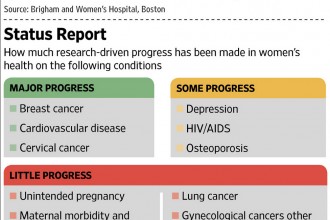From The Washington Post:
Ephemeral brine on Mars! Hmmm. That doesn’t quite have the same ring as “water on Mars!” The latter formulation sounds like a paradigm-buster. Mars was supposed to be a desert wasteland, lifeless, cold, with almost no atmosphere. But Monday NASA announced new evidence for seasonal liquid water on the surface of Mars — after teasing everyone with a press release Friday saying that a “major mystery” of Mars had been solved.
Herewith a few thoughts from a reporter who has been around so long he remembers when Mars had canals.
First, all hail the science here: This is remote sensing and analysis of a high order. The research behind NASA’s big announcement uses spectroscopy, a nifty technique for analyzing chemistry at a distance by studying the quirks of reflected light. This research used an instrument aboard a spacecraft orbiting Mars.
[The cast of ‘The Martian’ quizzes real astronauts on life in space]Just to be clear: The new paper does not report the direct detection of water. It reports the detection of chemical signatures consistent with molecules having been hydrated with liquid water. The picture is coming together nicely: Those dark, seasonal streaks are likely caused by seasonal flows of liquid, salty water.
This water on the surface of Mars doesn’t mean astronauts are going to have a swimming hole. It’s mostly about zero inches deep. Water can flow in sand. Perhaps it pools at the bottom of a slope — that would be cool. We’re talking about recurring slope lineae, which, as The Post’s Rachel Feltman puts it, looks like “the slow crawl and retreat of dark, damp sand.”
[Mars find is not a “Eureka!” moment. Science is a grind-it-out process.]The water appears seasonally on slopes warmed by the sun. It may come from liquid aquifers. Another possibility is that it may result from a chemical reaction of salts and atmospheric water. Mars turns out to be more humid than we knew, NASA’s head of planetary science, Jim Green, told The Post in an interview.
Green said the new results are great news for future astronauts — like the Mark Watney character in the forthcoming movie “The Martian.”
“Mark Watney could have taken advantage of this discovery,” Green said.
1 of 3 10/1/15, 1:07 PM Finding liquid water anywhere in the solar system is a huge deal, because the evidence for it has been so limited, and life as
The harsh truth about Mars water and NASA’s ‘Journey to Mars’… https://www.washingtonpost.com/news/speaking-of-science/wp…
we know it depends on liquid water. “Follow the water” has been an astrobiological mantra. This may seem slightly narrow- minded, in that one could imagine alien life of a completely different chemical nature, but even the most imaginative thinkers, such as Carl Sagan, were water chauvinists and carbon chauvinists.
Liquid water is extraordinarily handy as a medium for biochemistry, and H2O, though rare in liquid form, is a common molecule in the cosmos. Carbon forms complex molecules that are stable at a range of temperatures. Again, common stuff. Life as we know is not made of exotic materials, but of the common stuff lying around everywhere. You would expect alien life to have properties similar to life on Earth. Thus finding liquid water is a big deal from an astrobiological perspective.
But let’s not get carried away by the rip-current of hype that naturally forms around any big science announcement involving Mars. This planet has been fooling us for more than a century. There were not canals after all. There was not seasonal vegetation. The Viking mission in 1976 initially produced what seemed to be positive results in experiments looking for life, but the scientists, even life-loving Sagan, eventually concluded that the surface was sterile. There’s methane in the Martian atmosphere, but no one knows if its biological or non-biological in origin.
[Why can’t we just send our rovers to look for life on Mars?]NASA did not time the Monday announcement with the movie premiere, Green said. John Logsdon, professor emeritus at George Washington University’s Space Policy Institute, said he thinks that is true, because the new result was going to be announced at a planetary science conference. Logsdon did think NASA hyped the result a bit, however.
“Calling it a big mystery, I think, was over-hyping,” Logsdon said. Why does NASA do that?
“Preparing for humans-to-Mars is the rationale for NASA’s human spaceflight program,” he said. “So in order to have the public support needed to sustain the program, they fall into the long-established pattern of overselling.”
NASA is, in fact, working on critical pieces of what could be needed for a human mission to Mars — someday. NASA is building a jumbo rocket, but it would have to be upgraded for a Mars mission, with a more powerful upper stage. The new Orion capsule is built for missions lasting 21 days, so you can’t get to Mars in that. New hardware needed. Hardware costs money. NASA has been making due with a flat budget for a long time. Budget is mission-critical. Of all the obstacles to a humans-to-Mars mission, the budgetary challenges may be the most serious.
There are also some key technical issues that need to be resolved, not least of which is how to land a heavy payload, with humans, on Mars without creating a new crater. Mars has an unhelpful atmosphere: Too thin to slow you down very much with parachutes, but thick enough to burn you up if you enter at high speed with inadequate shielding. The genius engineers will probably figure this out — Elon Musk at SpaceX is already on the case. Could Elon get to Mars before NASA? As
Logsdon puts it, “I don’t under-estimate Elon.”
— Read the whole story on the Washington Post






